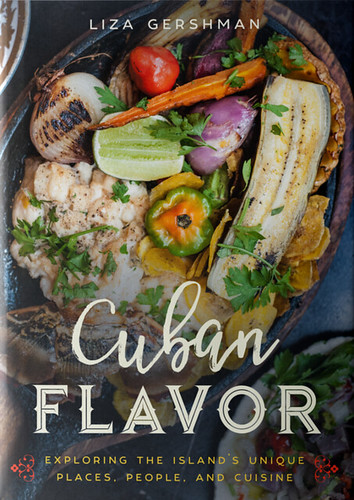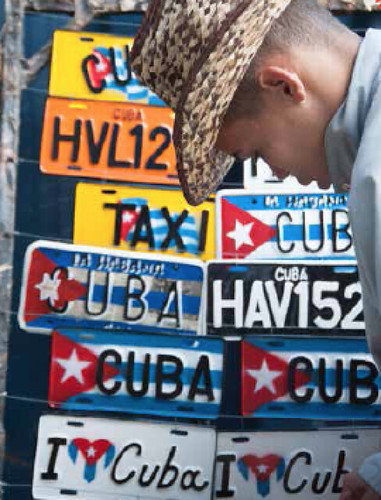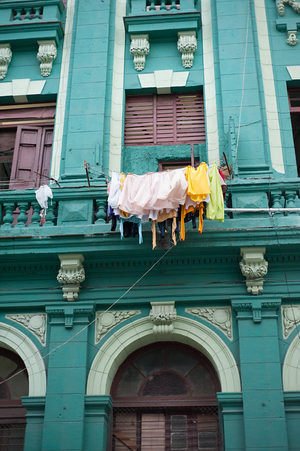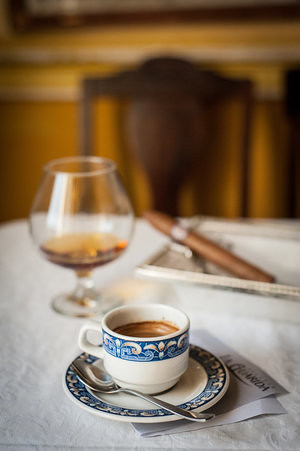Exploring the Flavors of Cuba with Photographer and Cookbook Author Liza Gershman
Anchoring the string of Caribbean islands that includes Haiti, Puerto Rico, Montserrat, and others, Cuba is home to a cross-section of people – and cuisines. For years, the country has been relatively inaccessible to tourists, especially those from the U.S. And while U.S.-Cuban relations remain tenuous, the easing of travel restrictions have made it possible for visitors to start exploring the island, the largest in the Caribbean, and one distinguished for its natural splendor. It's noted that Christopher Columbus was so enamored with the country upon arriving there in 1492 he pronounced, "This is the most beautiful land human eyes have ever seen!"

Photographer and writer Liza Gershman explains part of what drew her to first visit Cuba in 2003 was the challenge of getting there. "I'm a curious traveler," says Gershman. "I've been fortunate enough to travel my whole life. I like to explore new places – and I'm naturally curious. So if someone says it's difficult to go to a certain place, it intrigues me."
Since that first visit, Gershman has returned to the island several times – and seen how it's changed over the years. Recently, she published Cuban Flavor: Exploring the Island's Unique Places, People, and Cuisine to capture some of the country's diverse cuisines and quintessential flavors.

To learn more about the country – and its eclectic cuisine – Wandering Educators asked Gershman to share some of her insights.*
What part of Cuban cuisine surprised you the most?
Overall, two things have always surprised me about Cuban food. First, was that they had access to so few ingredients. When I first went there, I had chicken and rice at nearly every meal, maybe a sprinkling of beans here and there. You could really see the affects of the embargo.
Fast forward to 2010 and the government has allowed Cubans to have privately run restaurants; initially the meals were still really sparse. But in the last few years, especially the last 3 years, with the softening of regulations, chefs have access to so many more ingredients and influences. Chefs have been traveling elsewhere, like to France, and then bringing back what they've learned.
I think when you're deprived of so many things as a people, you naturally want to share what you learn with others. There's a communal attitude there – people are very open to sharing things, including ideas about cooking techniques and ingredients.

You mention in your book that "Cubans are deeply resourceful people," especially when it comes to preparing meals and sourcing their ingredients to do so. Can you explain how that influences their cuisine?
People here find a way. It hasn't been easy for them, but they find a way, using the resources they have available. So some people have backyard gardens, even though they're illegal. Where there's a will there's a way. There's also a strong bartering system – if you have something to trade with someone else, you're ahead of the game. So if you're a restaurant owner and you have access to certain ingredients, you can trade those on the black market for other ingredients.

What would you say it THE Cuban dish and why?
Ropa Vieja is the national dish of Cuba. It's made with peppers, onions, and simple seasoning and usually with slow-cooked beef, flank steak. Beef is a real delicacy here in Cuba since it's so hard to come by.

The range of different flavors tied into Cuban cuisine really stood out in your cookbook, from Italian influences to Chinese. Can you explain briefly the connection of Chinese cuisine in Cuban cooking?
For many visitors, that's one of the most surprising things – to see such a large Chinese population in Cuba. Many Chinese came to the island in 1857 to work on the railroads and they brought their cuisine with them. Today, there's still a Chinatown section in Cuba, Barrio Chino [in Havana]. There's even a monument to Ho Chi Minh, which people probably wouldn't expect to find in the Caribbean.
For home cooks looking to capture a little Cuban flavor, where would you recommend they start?
I would start with mojo – it's a Cuban marinade that's very easy and typical of Cuban cooking.
[The mojo, found in Gershman's cookbook, includes the following ingredients: 1 large lime and orange, juiced; 2 tbsp. oil; 2 tsp. salt; ½ tsp. pepper; 1 tsp. cumin; 8 garlic cloves. She recommends marinating 1 small chicken in the mixture for at least one hour before cooking.]

Any recommendations for those looking to travel to Cuba?
I wanted to let your readers know that we offer a variety of trips to Cuba so people can discover the culture, food, arts, and music of the island. We have both group tours and private experiences. They're all legal and highly curated. I'd encourage people to come check it out at cubanflavorbook.com/visit/.
Also, for a limited time, when you purchase Gershman's book, you'll be entered to win a trip for 2 to Cuba. After purchasing, enter your Amazon order number here. By signing up, you'll also receive regular emails with information and recipes from Cuba.
Recipe: Cuban Spiced Pork Chops

Ingredients
2 lean boneless pork chops
2 limes, juiced
½ tsp. ground cumin
2 garlic cloves, crushed
¼ tsp. onion powder
¼ tsp. fresh ground pepper
½ tsp. olive oil (opt.)
Preparation
Trim the excess fat from the pork chops, and cut shallow cross-hatch marks on both sides of the meat.
Mix all remaining ingredients together in a bowl. Add in the chops and allow them to soak. Cover and place in the refrigerator to chill and marinate for a minimum of 1 hour.
Once chilled, grill or broil the chops at 500°F for 8-10 minutes, turning over halfway through. To maximize the tenderness of the meat and juices in the chops, only flip the meat once.
Serve with a side of rice and plantains.
Find Liza online:
https://www.cubanflavorbook.com/
@CubanFlavorBook
@Liza Gershman
Kristen J. Gough is the Global Cuisines & Kids Editor for Wandering Educators. She shares her family's adventurous food experiences--and recipes--at MyKidsEatSquid.com.
*Interview edited for space and clarity.
All photos courtesy and copyright Liza Gershman





















